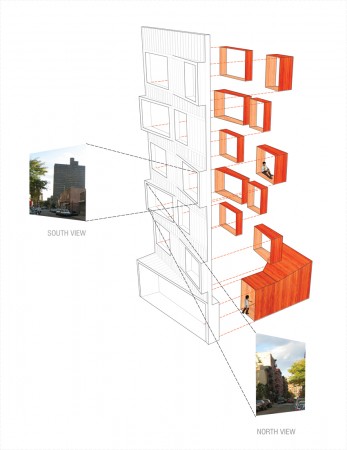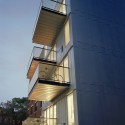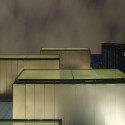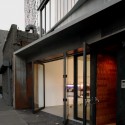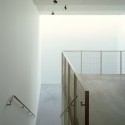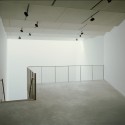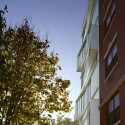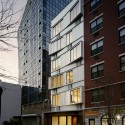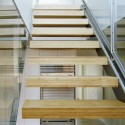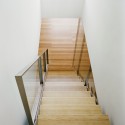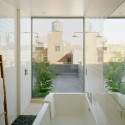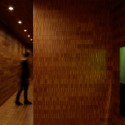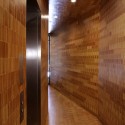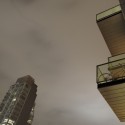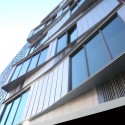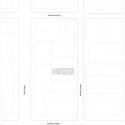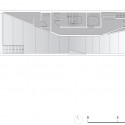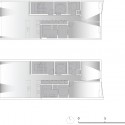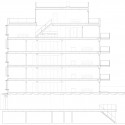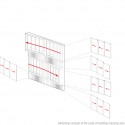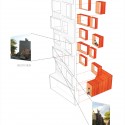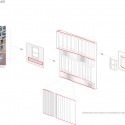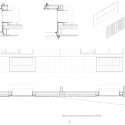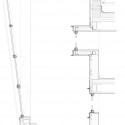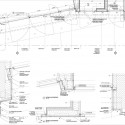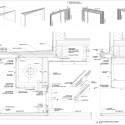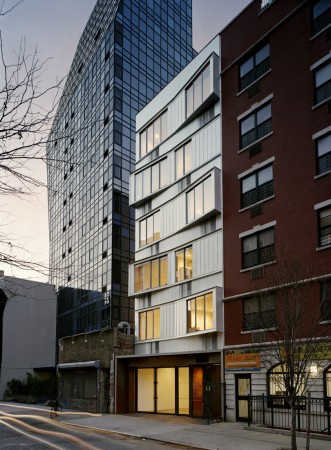
Location: New York, USA
Project Year: 2004-2007
Design Team: Eric Bunge, Mimi Hoang (Partners); Daniela Zimmer (Project Architect), Jorge Pereira, Takuya Shinoda
Client: 109 Norfolk, LLC
Constructed Area: 1,328 sqm
Program: Art gallery on Ground & Cellar Floors & 5 condo apartments
Photographs: Frank Oudeman & nArchitects
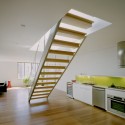
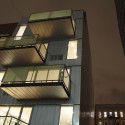
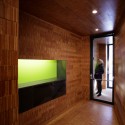
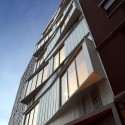
Switch Building is a 7 storey apartment and art gallery building at 109 Norfolk Street in the Lower East Side, New York City. The building consists of four floor-through apartments, a duplex penthouse, and a double height art gallery on the ground and cellar levels. nARCHITECTS provided full architectural services for the project, including all interior design.
The project’s design emerges from a creative interpretation of some of the narrow constraints imposed by zoning and the developer’s needs. The “switching” concept opportunistically maximizes difference while maintaining the efficiencies of repetition. In a reinterpretation of a traditional New York bay window, an angled front facade switches back and forth, allowing each floor-through apartment unique views up and down Norfolk Street and creating subtle variations in shadows and reflections. From the inside, the bay windows provide deep window seats surrounded by warm hardwood.
At the rear of each apartment, the living space extends out to large 7′x12′-6″ balconies - the largest allowed by zoning, which also shift side to side, creating double-height spaces between balconies to maximize afternoon light and neighborly interactions. While the apartment plans are identical, these variations allow each unit to be unique in its light qualities and views to the city.
While amenities and services such as bay windows, air conditioners and balconies often retain their identity as prefabricated products that are added onto normative facades, Switch Building incorporates them into the cladding. The building’s standard through-wall Packaged Thermal AC units (PTACS) are disguised with custom grilles situated between the Galvalume panels that alternate in direction from floor to floor. The grilles appear as modulations of the cladding, somewhat similar to fish gills: the panels narrow incrementally and pivot outward as they pass over the mechanical units. The underside of the balconies are clad in the same galvalume panels, and the cladding of the bay window continuous in plan to cover adjacent areas without projections. These normally separate entities are therefore redistributed as primary attributes of the building’s form.
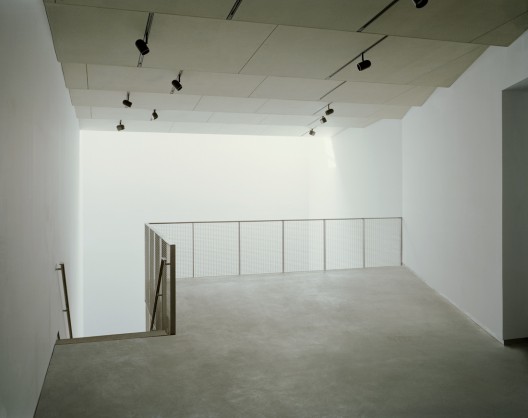
The new nonprofit Switch Gallery expands its boundaries with the street via a black hot-rolled steel and glass storefront and canopy that open completely to the sidewalk. At the rear of the gallery, visitors descend into a double-height volume illuminated by a large skylight. The gallery’s plan maximizes wall space in a fluid spatial continuity, while working around the obstacles of the residential core and lobby with which it shares its footprint. The gallery introduces a larger scale into the Lower East Side’s burgeoning art scene, which has been primarily inserting cultural programs into former tenement buildings.
- site plan
- ground floor plan
- apartments plan
- section
- facade cladding diagram
- facade views diagram
- facade windows diagram
- details 01
- details 02
- details 03
- details 04
